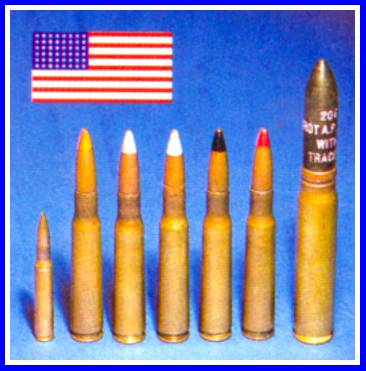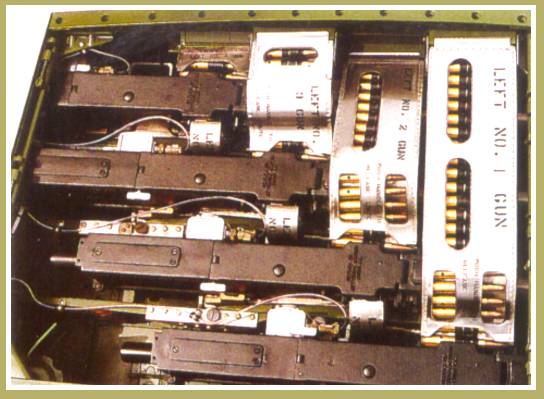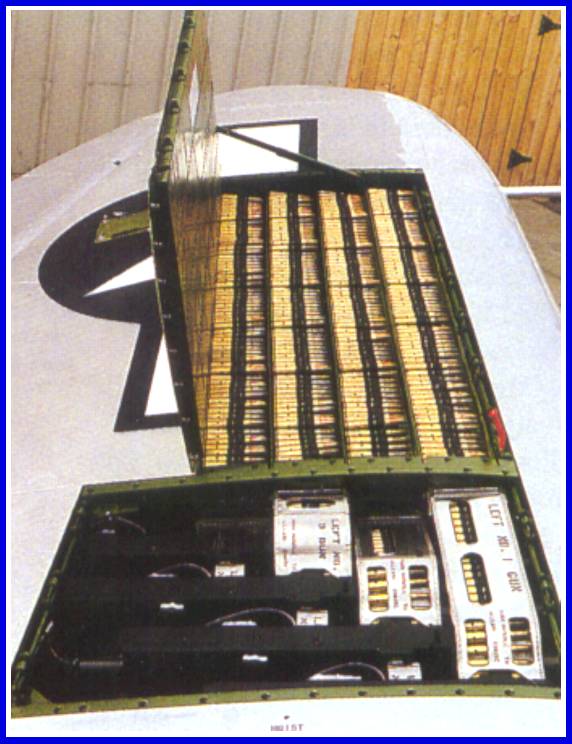
Usually,
a belt was loaded with a repeating mix of ammo, such as API, to punch holes
and start fires; then incendiary was used to set fire to ground structures,
etc. The exact mix of the cartridges in the belts was sometimes dictated
by unit or squadron policy, though some pilots chose the mix usually used
in their aircraft. Information about this has been lost and the author
would appriciate hearing from any ordancve types out there who have something
to say about what was actually being done.
.. |
America's
.50 Caliber
WWII
Do-All,
Kill All Ammo
The half
inch diameter .50 caliber (12.7mm) slug we used to win the War was just
big enough and heavy enough that it could be readily adapted to many purposes
without compromising either velocity or accuracy.
Essentiially,
there were five basic rounds that differed only in what they carried inside
their pointy noses, and they were identified by color codes.
* BLACK
TIP: M2 armor piercing, would penetrate all, or most, airborne armor
plate.
* SILVER
TIP: M8 armor piercing incendiary (API), would penetrate and produced
white-hot flame on impact.
* BLUE
TIP M1 incendiary, primarily designed to set fires.
* ORANGE
TIP: M1 tracer, usually mixed at least one in every four rounds for
sighting purposes, but some aces preferred to have no tracer so the enemy
wouldn't know they were being fired on until they had been hit.
* RED
TIP: M1 or M21 tracer, a later version of the orange. |
..

Pages
62 - 68 of October 1998
F
L I G H T J O U R N A L
Magazine
|


